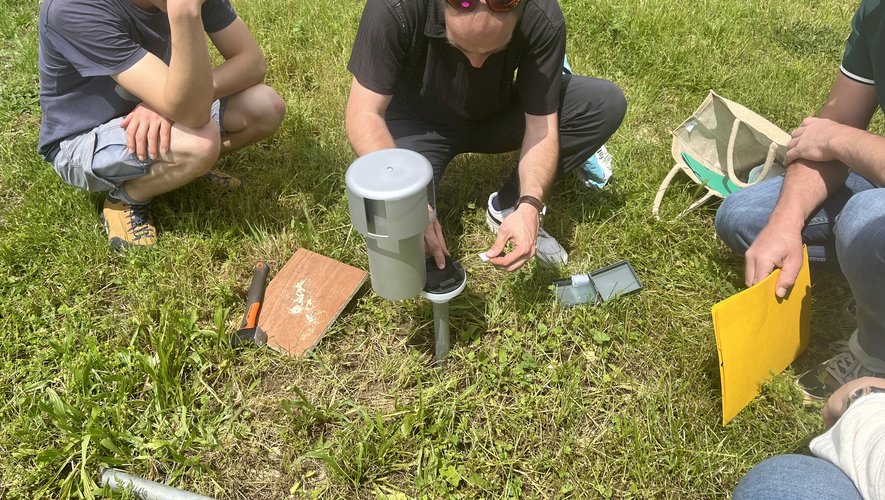Privileged partner during many of Ana’s actions, the agricultural school has agreed to host the first ragweed pollen detector in Ariège on its land.
On Tuesday May 30, the agricultural school of Pamiers welcomed Anne Tison, director of the ANA-Conservatory of natural spaces and Samuel Monier, communication manager at the National Aerobiological Surveillance Network (RNSA), for the installation of the very first Ariège ragweed pollen detector. This tool, developed to observe ragweed pollen exclusively, should make it possible to analyze the situation and thus help to fight against its spread.
A health and economic problem
Introduced in Europe from the end of the 19th century, Ambrosia with sagebrush leaves is particularly invasive. Its pollen emitted from the end of July to the beginning of October, has a powerful allergenic power that can cause allergic rhinitis, conjunctivitis, tracheitis, cough, urticaria, even asthma and eczema. The particularity of this pollen is that the phenomenon of allergy can affect any individual, at any age and this, whatever the family predispositions. According to Anne Tison, “it is one of the most allergenic pollens, it is enough to be in contact with it once or twice to develop an allergy. The pollen can travel up to 100 km depending on the winds.”
In addition to the health side, the problem of ambrosia also impacts the economy. “In Auvergne-Rhône-Alpes, a study has shown that the bill amounted to nearly 41 million euros, induced by sick leave linked to the allergenic effects of ragweed”, indicates Samuel Monier. Crops are not spared from the spread of this plant. The presence of ragweed in certain agricultural plots can lead to a total or partial loss of yield for the farmer, a depreciation of the value of the fund, a downgrading of the harvest or a fall in the price of production, a financial burden for the additional farmer.
Detect to better prevent
The device recently installed on the land of the agricultural school should now make it possible to observe the phenomenon. From mid-July to mid-October, Christophe Corbet, director of operations, will collect data from the system with his teams every week. A complete analysis will then be carried out by the RNSA to adapt an action plan to the fight against the spread of ragweed pollen. Particularly invasive, the ragweed can reach a size of 4 m. Each plant can produce thousands of seeds which have a lifespan of 40 years.

